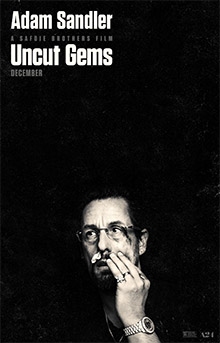 When I started watching Cheer, I had no idea what I was getting into. I thought it was a simple documentary about an ambitious college cheerleading team. When I watched the final episode, I sobbed like a child, thoroughly invested in these kids, their dreams, and their insane journey to the Grand National Championships.
When I started watching Cheer, I had no idea what I was getting into. I thought it was a simple documentary about an ambitious college cheerleading team. When I watched the final episode, I sobbed like a child, thoroughly invested in these kids, their dreams, and their insane journey to the Grand National Championships.The show is a six-part documentary series that follows the 2019 Navarro College cheerleading team. Navarro is in Corsicana, Texas, a tiny town in the middle of nowhere, that has become renowned for its elite cheerleading squad. This is mostly thanks to Monica Aldama, their cheerleading coach who took over the program in 2000 and turned it into a dynasty through her innovative routines, perfectionism, and tough love. Emphasis on the "tough." The kids on this team worship this woman (she is known as "the Queen") and you'd get drunk pretty quickly if you took a shot every time someone said "I would do anything for Monica." However, sometimes that entails suffering through incredible pain and pushing through horrific injuries.
If by “cheerleading” you’ve been picturing a bunch of women on the sidelines with pom-poms, you are sorely mistaken. This is a demanding sport, requiring unsurpassed athleticism, gymnastic skill, and brute strength. The men are lifting and tossing the women all over the mat, while the women are flipping, tumbling, and flying through the air like angels. Unfortunately, they don’t actually have wings and you will rapidly lose track of the number of injuries as people plummet to the ground. No other sport is so heavily reliant on the notion of teamwork - if your teammates do not catch you, that could very well be the death of you. And so these kids are constantly forced to communicate and bolster each other, and work through their complicated adolescent drama for the sake of the team.
And there is so much drama. Cheerleading is an expensive sport, but Monica has a tendency to recruit kids who come from difficult backgrounds. And what this documentary does masterfully is slowly parcel out the back stories of some of these kids and get you invested in their personal struggles. The common refrain is “Cheer saved me.” These kids came from broken families, with histories of abuse or neglect, but being a part of this team has given them a sense of self-worth and confidence. Many of them view Monica as a second mom, and she is an exacting disciplinarian. She understands that cheerleading is not something these kids can do forever and insists that they also get good grades and develop life skills that will serve them well into adulthood. She has very traditional values, but at one point she talks about how she has had talks with her pastor about how there is nothing wrong with the gay boys on her team. She fights for these kids and supports them, but if they step one toe out of line, it's game over. After six episodes, I still don't know if she's a hero or a villain (I think the correct answer is that she's just a human being). But what I do know is that the kids are incredible and I rooted for them with every fiber of my being.
Cheer will play on every emotion you possess. Director Greg Whiteley is a consummate filmmaker and knows how to tell his story well. Like any good sports documentary, you develop a thorough appreciation and love for this high-octane and demanding sport. But you will also fall in love with these kids, who can alternately seem so wise and introspective and then so troubled and helpless. It is an apt summary of the human condition and is one of the most moving and powerful shows you can expect to see this year. You think you have no interest in cheerleading? Think again.


